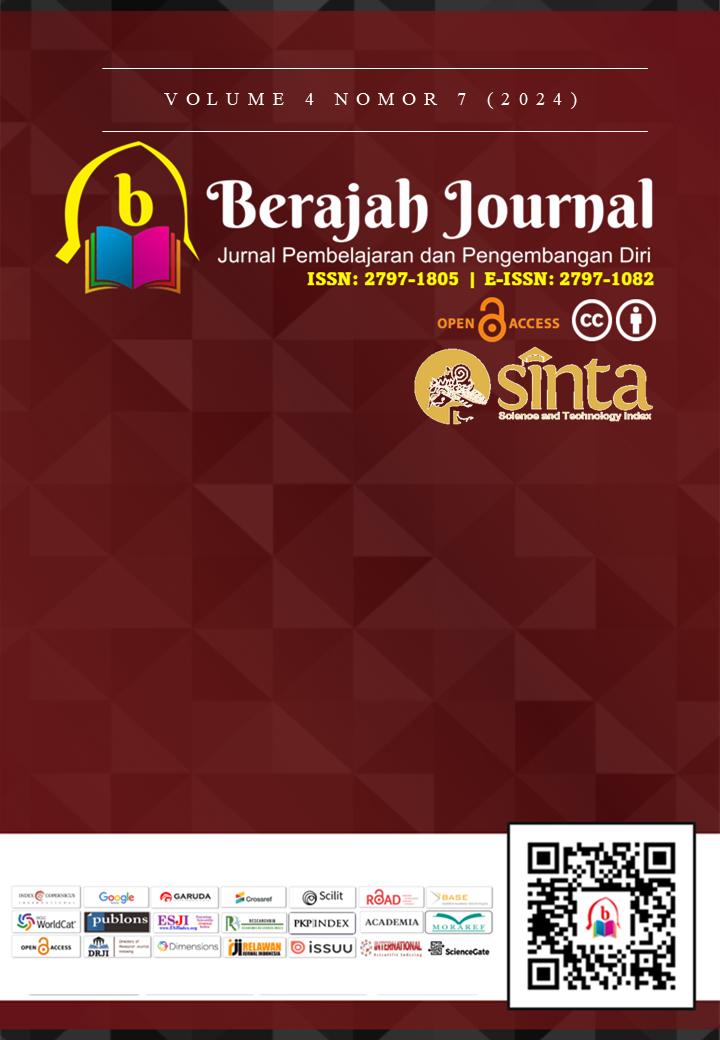PENGARUH INSENTIF PAJAK UNTUK BIDANG TERTENTU
DOI:
https://doi.org/10.47353/bj.v4i7.441Keywords:
tax incentives, production sharing contracts, oil and gasAbstract
This study analyzes the influence of tax incentives on investment decisions in the upstream oil and gas sector in Indonesia, as well as their implications for social justice and state sovereignty. Using the Systematic Literature Review (SLR) approach, this study identifies and evaluates studies related to tax incentives and profit-sharing contracts. The results show that the gross split contract scheme, which replaces the cost recovery scheme, is expected to increase transparency and efficiency in natural resource management. Although designed to attract investment by reducing risk, challenges such as regulatory uncertainty and environmental issues remain. This study found that tax incentives have a positive and significant influence on investment interest, potentially increasing state revenue. However, there are concerns that the scheme could discourage investment in high-cost projects, risking affecting the national economy and energy security. Policy recommendations include the evaluation and adjustment of tax incentive policies, as well as dialogue between the government, contractors, and the community to reach mutually beneficial agreements.
Downloads
References
Andrean Widodo, D., & Millenia Krisnayanie, N. K. (2021). Analisis Insentif Perpajakan Terhadap Realisasi Penerimaan Perpajakan Tahun 2020. Jurnal Pacta Sunt Servanda, 2(2), 57–67. https://doi.org/10.23887/jpss.v2i2.469
Anta Kusuma, I. G. K. C. B., & Simanungkalit, Y. T. S. (2022). Implementasi Insentif Pajak Menurut Model G Edward III. Jurnal Pajak Dan Keuangan Negara (PKN), 3(2), 236–248. https://doi.org/10.31092/jpkn.v3i2.1523
Edy Soesanto, Abdullah Rizky Agusman, M. Mahlil Nasution, & Siti Fadhillah. (2024). Kebijakan Pemerintah Dalam Penentuan Kontrak Gross Split Sektor Minyak Dan Gas Di Indonesia. Jurnal Bhara Petro Energi, 2(Mei), 8–14. https://doi.org/10.31599/zk7tkb71
Farhani, Azizah, Usadhani, & Kurniawan. (2023). Pembagian Hasil Migas Melalui Cost Recovery dan Gross Split Bagi Sebesar- Jurnal Hukum & Pembangunan PEMBAGIAN HASIL MIGAS MELALUI COST RECOVERY DAN GROSS SPLIT BAGI SEBESAR-BESARNYA KEMAKMURAN RAKYAT MENURUT UUD NRI TAHUN 1945. 52(June 2022). https://doi.org/10.21143/jhp.vol52.no2.3350
Hamdiah, N., & Anggrini, A. (2024). Pengaruh Perencanaan Pajak , Insentif Pajak dan Pertumbuhan Laba Terhadap Manajemen Laba. 12(1), 59–71.
Jumiati, W., & Sismartono, D. (2018). Tantangan Keekonomian Kontrak Bagi Hasil Gross Split Dan Cost Recovery. Studi Kasus Lapangan Gas Offshore Di Sumatera Bagian Utara. Lembaran Publikasi Minyak Dan Gas Bumi, 52(2), 105–112. https://doi.org/10.29017/lpmgb.52.2.350
Misjuan, Y. B., & Dewi, E. Y. R. S. (2022). Menuju Keadilan Sosial Dalam Pengelolaan Sektor Hulu Migas (Analisis Kontrak Bagi Hasil Gross Split Dari Prespektif Pasal 33 UUD 1945). Justitia: Ilmu Hukum Dan Humaniora, 9(1), 98–112.
Nostalgi, B. (2021). Kepastian Hukum Pengelolaan Sektor Hulu Migas Dengan Kontrak Bagi Hasil Split Yang Bersifat Lintas Sektor Dan Implementasinya Terhadap Pertumbuhan Investasi Disektor Hulu Migas. Dharmasisya, 1(1), 22.
Sanira, & Ratnasari. (2024). Neraca Neraca. 1192, 304–317.
TAUFIQ, A. F. (2022). Pemberian Insentif Pajak Kepada Investor Di Industri Minyak Dan Gas Bumi Dalam Sektor Eksplorasi. Jurnal Nasional Pengelolaan Energi MigasZoom, 4(1). https://doi.org/10.37525/mz/2022-1/332
Downloads
Published
How to Cite
Issue
Section
License
Copyright (c) 2024 Muhammad Ihsan, Aziz Lukman Hakim Mustaqim, Indra Pahala, Puji Wahono

This work is licensed under a Creative Commons Attribution 4.0 International License.




























